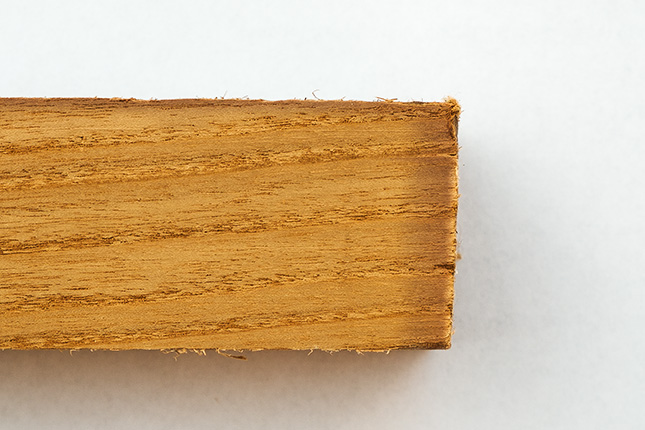Eureka! It's Not Oak

Surprises are a duel-edged sword. Sometimes they induce pain and aggravation such as any conversation that starts with, "Dad, about the car." Others though can be quite pleasant, like finding a $20 bill in the pocket of seldom worn jeans or discovering the rough sawn wood you thought was red oak turns out to be a species considered to be extinct.
I buy all of my wood from small, family owned saw mills. I like the principle of helping other small businesses in my community and the green or air-dried lumber they provide is far nicer for me to bend. One of those mills has belonged to the family of close neighbor for generations. Started by my neighbor's Grandfather, three generations have supplied rough sawn native hardwoods to many in the town. They store the wood in an old barn and have it loosely sorted by wood species, thickness, and length.
I picked up several boards of what I thought to be red oak for a utility cabinet project and it sat in my basement for many months before inspiration turned to perspiration - and I finished the last episode of Breaking Bad. When surfacing the wood to make it smooth, I noticed one board worked differently and had a different feel.

The grain structure was similar to oak, but it had a more golden tone and appeared to be less dense. What turned out to be a telltale sign, the wood had a purplish layer around the outside surfaces where it was exposed to air for long periods of time. The effect is more pronounced on the end grain as you can see in the image above. With this and other clues and several hours of sleuthing online using the Wood Database, I was thrilled to discover a piece of American history in the form of American Chestnut.
The wood species used to be one of the most prolific hardwoods up and down the east coast of the United States. At it's peak, it was said a squirrel could run from Georgia to Maine across the tops of American Chestnut trees, never touching the ground. A fungal pathogen accidentally imported to the US on an Asian Chestnut created a blight originating in New York in 1904. It quickly spread and wiped out this once magnificent tree. Native trees will occasionally still grow today, but succumb to the blight before maturing past 6 inches in diameter.
There is hope. The American Chestnut Foundation is working to find a cure and return the American Chestnut to it's glory. Through a carefully structured program of Breeding, Biotechnology, and Bio-control, the foundation has made significant progress towards understanding the fungal blight and bringing the species back. Visit their wonderful website to learn more.
Now go outside and find a tree with a species you don't yet know. It's a fun way to spend time in nature and you'll learn something interesting. Who knows, that unusual tree on the edge of your property could be a struggling American Chestnut - TACF would love to hear from you. You know you can do it!
